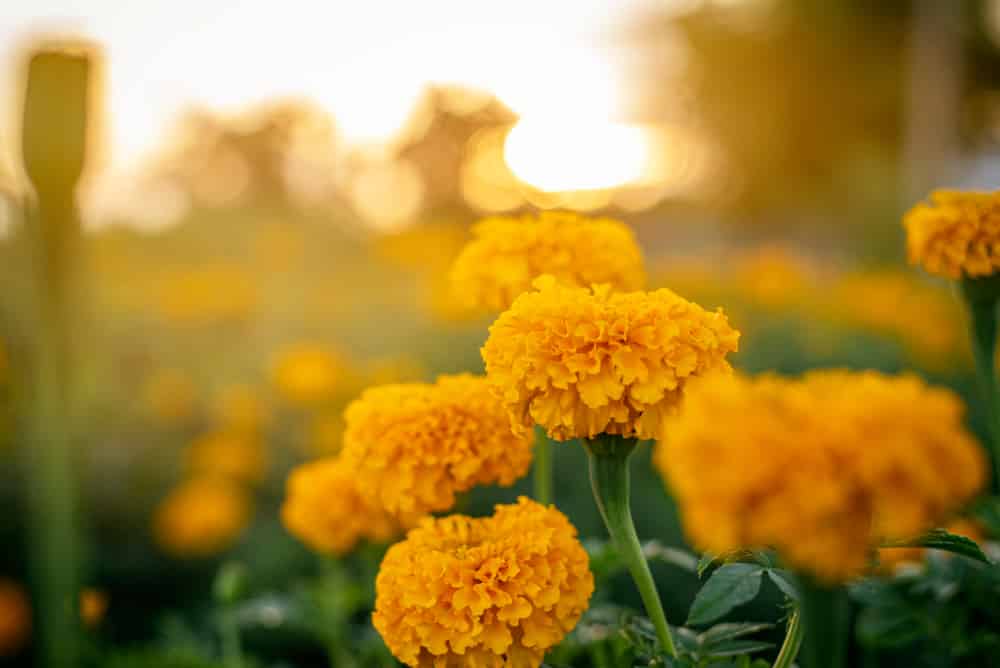
Marigolds are one of the most popular flowers in the whole world. They are grown widely in different regions of the world. Even though they don’t have a specific use, they are mostly grown to add beauty to one’s garden. There are over 50 different species of marigolds.
These charming flowers act as the main source of attraction for butterflies, ladybugs, bees, as well as other insects that are beneficial for gardens. These flowers mainly bloom from late spring until mid or end of fall. Also, their seeds germinate very quickly, which also means that they can bloom in a short time period (usually 8 weeks).
What Is Eating My Marigolds?
As charming as marigolds are, it is incredibly important that you take good care of these flowers. Some individuals, especially beginners, may notice to see some of their marigolds get eaten away. The problem is that they mostly don’t have any idea what is eating their flowers.
If you are also in a similar situation and are wondering “What is eating my marigolds”, then we may have the answer for you. Unfortunately, there are a number of reasons that could lead to your marigolds getting eaten away. Here are all of them listed down below:
- Slugs and Snails
One of the most common bugs that could be eating your marigolds is both slugs and snails. These are known to cause all kinds of troubles in your garden by quickly destroying the beauty of your garden.
In order to determine whether slugs and snails have damaged your marigolds, we recommend checking the leaves and petals of the flower. If the flower seems to be chewed randomly without following any pattern, and there are tracks on the ground, then you have a slug situation. Getting rid of this situation will require you to make use of slug pellets as well as salt.
- Birds
The second most likely possibility is that birds may be pecking at your marigolds. As birds are known to peck at such flowers, they may damage the flower in the process. This can be further confirmed if you notice your flowers to have missing petals.
If you want to protect your flowers against these birds, then you should use a net or a cage. There are also different devices available that can be used to scare away birds.
- Rabbits
Although it isn’t much likely, it is still possible that rabbits are eating your marigolds. This has a higher chance if you do have rabbits around the marigolds.
Dealing with those rabbits will require you to put up a fence. Doing so should prevent rabbits from entering and eating your marigolds.
- Disease
It is possible that diseases like spider mites may be damaging the growth of your marigolds. In this case, you will have to first determine the type of disease that your flower is suffering from.
Once you have identified the disease, only then can you proceed with recovering your plant. Different diseases have different procedures for recovering.
- Grasshoppers
Grasshoppers can also potentially damage the marigolds in your garden. Once a grasshopper invades your garden flower, it will keep on chewing the plant until the petal finally disappears.
During the daytime, these grasshoppers are usually found resting on top of the marigold. This is also when they eat these flowers. You can manually get rid of the grasshopper, or use a predator against it.
- Other Hungry Insects
There could be other hungry bugs or insects that are eating away your marigolds. Some of them may include butterflies or caterpillars.
While you can use different insecticides in order to deal with them, just make sure that you don’t use anything that will damage your flowers. Alternatively, you can try manually eliminating or getting rid of the insect.
The Bottom Line
Are you asking yourself the question “What is eating my marigolds?”. If so, then read the article written above. Even though we have written 6 different possibilities, we still think that it could most probably are slugs that are eating your marigold. They are known to be the number one reason for damage done to marigolds. Keep in mind that they mostly show themselves during the night, or at damp places.
